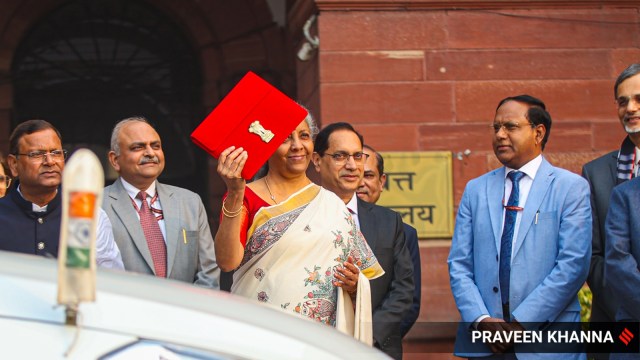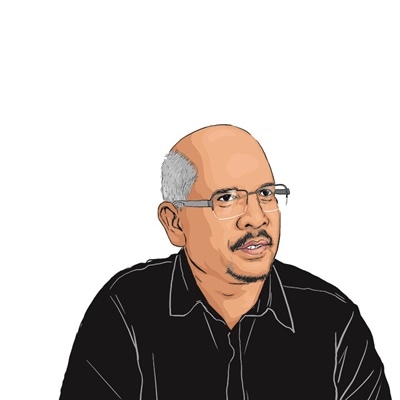

Feb 4, 2025 19:31 IST First published on: Feb 4, 2025 at 19:31 IST
One of the notable features of the Union Budget 2025-26 is the allocation of funds to the Ministry of Tribal Affairs. At Rs 14,925.81, it is almost a 46 per cent jump from the previous budget. Three crucial initiatives of the ministry — the Pradhan Mantri Janjati Adivasi Nyaya Maha Abhiyan (PM JANMAN), the Dharti Aaba Janjatiya Gram Utkarsh Utkarsh Abhiyan (DA-JGUA) and the Eklavya Model Residential Schools (EMRS), saw an increase in outlay.
The PM-JANMAN vision is aimed at improving the socio-economic status of Particularly Vulnerable Tribal Groups (PVTG) by bridging gaps in health, education, and livelihoods. Its overarching goal is to uplift the living standards of PVTG communities by addressing their basic needs and fostering sustainable development, ultimately aiming for their holistic well-being and inclusion within the society at large.
Story continues below this ad
The DA-JGUA scheme is targeted towards saturation coverage of government schemes in health, infrastructure, education, and livelihood. Earlier, the scheme was named Pradhan Mantri Janjatiya Unnat Gram Abhiyan (PM-JUGA). Dharti Aaba (father of the earth) is a title used in Jharkhand to honour Birsa Munda, the anti-colonial tribal leader who fought against British rule in the late 19th century.
The third important component of the budget is the Eklavya Model Residential School.
Notably, the tribal sub-plan (TSP) approach was introduced in 1974-75 to address abysmal resource allocation for the ST population. As per the TSP, the budget allocation was to be made in proportion to the size of the tribal population both at the union and state levels. Yet, all through the planned phases, there has hardly been such allocation. Later, the TSP approach was transformed into the Scheduled Tribe Component (STC) and Development Action Plan for Scheduled Tribes (DAPST). In the last 10 years, the budget allocation under the Development Action Plan for STs (DAPST) has increased manifold.
Story continues below this ad
The jump in budget allocation is not merely an effort to bridge the developmental gaps between the STs and the larger population, rather, it is a move to enhance electoral control over them. Tribals are strong vote banks of the BJP and have been crucial in their return to power in Chhattisgarh and Odisha. Their importance in the BJP’s electoral politics is evident from their choice of Adivasi CMs in both states. One must not forget that in 2014, when the BJP won Jharkhand, another tribal-dominated state, they appointed a non-tribal CM, leading to political backlash. The desire to have electoral control over the tribal people also stems from the government’s interest in the mineral-rich tribal-dominated areas in order to push their developmental agenda.
In this context, the budget allocation may look attractive but does not necessarily lead to the development of Adivasis. This has often been the case. Either the allocation remains unspent or diverted for purposes other than welfare and development. Many infrastructure projects have met such a fate. More often than not, resources are diverted to non-tribal populations. It is well recorded that the tribal people have not accrued the benefits of development, be it industries, dams or mines. If the development projects are not beneficiary-targeted, development generally escapes tribes.
most read
Budget allocation is often made without due diligence. Let us take the case of the Eklavya Model Residential Schools (EMRS). A sum of Rs 7,088.60 crore, nearly double last year’s Rs 4,748 crore, has been earmarked to provide quality education to tribal students in remote areas. Yet, if one goes by the status of EMR schools, of the 708 (as of July 2024) sanctioned, only 405 are functional. In Jharkhand, Odisha, and the northeastern states, non-functional schools far outnumber functional ones.
There is also persistent conflict within the developmental projects like national parks or wildlife sanctuaries that dislocate people from their habitat and livelihoods. It explains why literacy, poverty, and poor health conditions are pervasive among tribal people in Odisha, Jharkhand, Chhattisgarh, etc, despite their states being considerably industrialised. People-oriented development projects will succeed only if the projects leading to dispossession and displacement are put on hold. In the case of PVTGs, a cautious approach is needed. They are mostly located in forests. The welfare/development programmes, in their case, are contingent on securing the rights provided under the Forest Rights Act. They need their habitat rights over land and forests to be recognised.
The writer is Professor of Eminence and Bharat Ratna Lokapriya Gopinath Bordoloi Chair at Tezpur University, Assam, India


